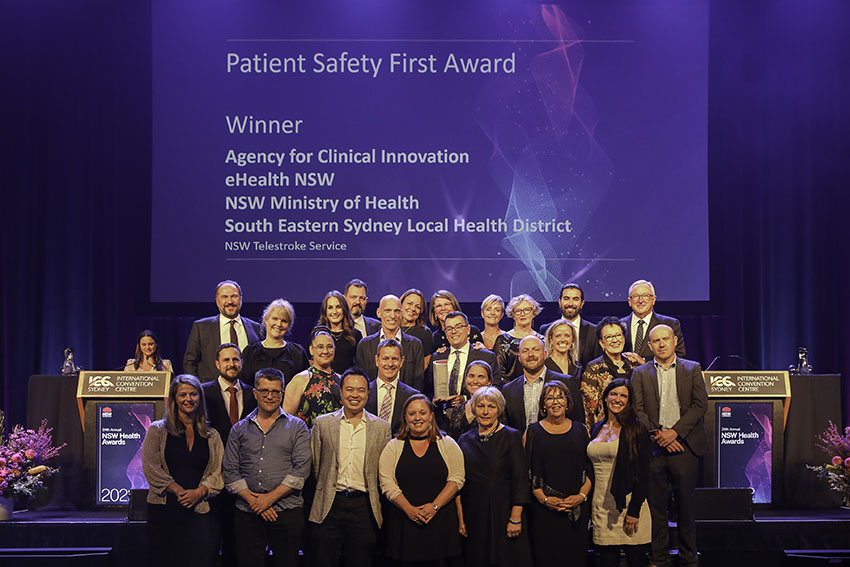Congratulations to our project teams and partners who have been recognised in this year’s NSW Premier’s Awards and NSW Health Awards. We are making a real difference to health outcomes for people across NSW.
Measuring what matters to patients

The ACI’s Patient Reported Measures team and partners eHealth NSW were finalists in this year’s NSW Premier’s Awards, in the Excellence in Digital Innovation category.
The Patient Reported Measures (PRMs) program enables patients to provide direct, timely feedback about their health experiences – a critical component in achieving NSW Health’s vision for truly integrated, better value care across the state.
Patient surveys are used to give clinicians real-time insight into patients’ needs and experiences at the point of care, helping clinicians understand what matters to patients and provide more effective care.
A purpose-built IT platform, the Health Outcomes and Patient Experience (HOPE) platform, enables real-time data capture so that patients and carers can provide feedback about their outcomes and experiences from their personal electronic devices.
Patient safety first

The NSW Telestroke Service took out two awards at the recent NSW Health Awards, which is a testament to the incredible impact the service is having across the state.
Telestroke won the Patient Safety First category and the Secretary’s Award for Integrated Value Based Care, with key partners recognised for both awards: the ACI, South Eastern Sydney Local Health District (SESLHD), eHealth NSW, and the Ministry of Health (NSW Health).
The Service connects local emergency doctors with specialist stroke physicians to deliver state-of-the-art stroke treatment. It is a virtual care initiative providing access to ground-breaking, time-critical treatments previously limited or unavailable due to geographical barriers. It saves lives and reduces disability for stroke patients in rural and regional NSW.
Patients receive treatment closer to home and are only transferred if they need more complex treatment. Additionally, advanced brain imaging and unified communications technology enables Telestroke specialists to support local clinicians to deliver advanced stroke treatments.
The service supports the NSW Health Future Health Strategy by providing world class clinical care, where patient safety is the number one priority.
Importantly, local health districts (LHDs) have played a key role in the local implementation of Telestroke. In particular, Hunter New England and Mid North Coast LHDs, which were pivotal throughout the program’s inception and pilot phase.
Telestroke has been implemented across all 23 sites in NSW and has helped almost 3,000 patients.
Keeping people healthy

Also at the NSW Health Awards, our Finding Your Way team were finalists in the Keeping People Healthy (COVID-19) category.
Finding Your Way is a shared decision making model and suite of tools developed by Aboriginal people, for Aboriginal people.
It was initially developed to support culturally appropriate discussions between Aboriginal people and their healthcare providers about COVID-19 vaccines. However, it is now being used for all health-related decision making.
The model’s interconnected circles denote the core elements of shared decision making through an Aboriginal perspective.
An interactive tool, question prompts, videos and other collateral have been developed to support the uptake and use of the resource.
Finding Your Way aligns with policies that include the National Safety and Quality Healthcare Standards and Closing the Gap. The project provides leadership (professional and consumer) and infrastructure (training, tools and campaigns) to facilitate system-wide implementation of shared decision making with Aboriginal peoples, aligning with Future Health Strategic outcomes and key objectives.